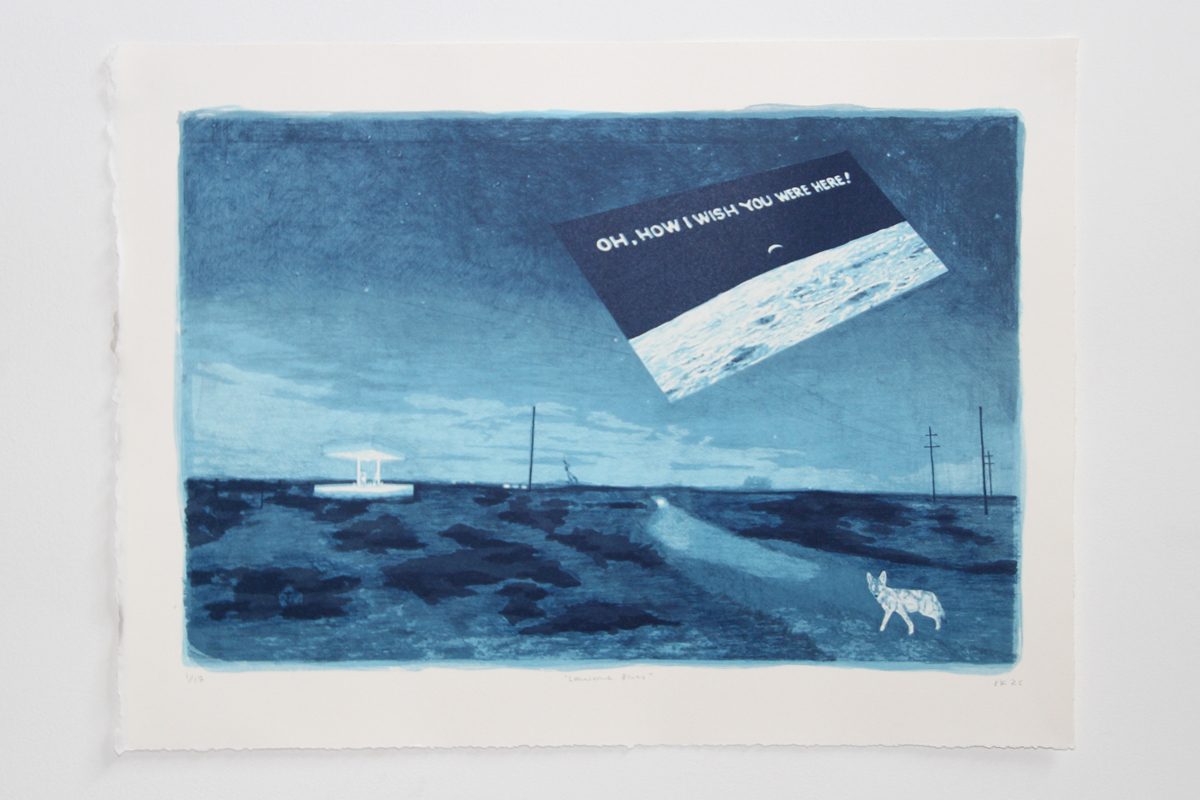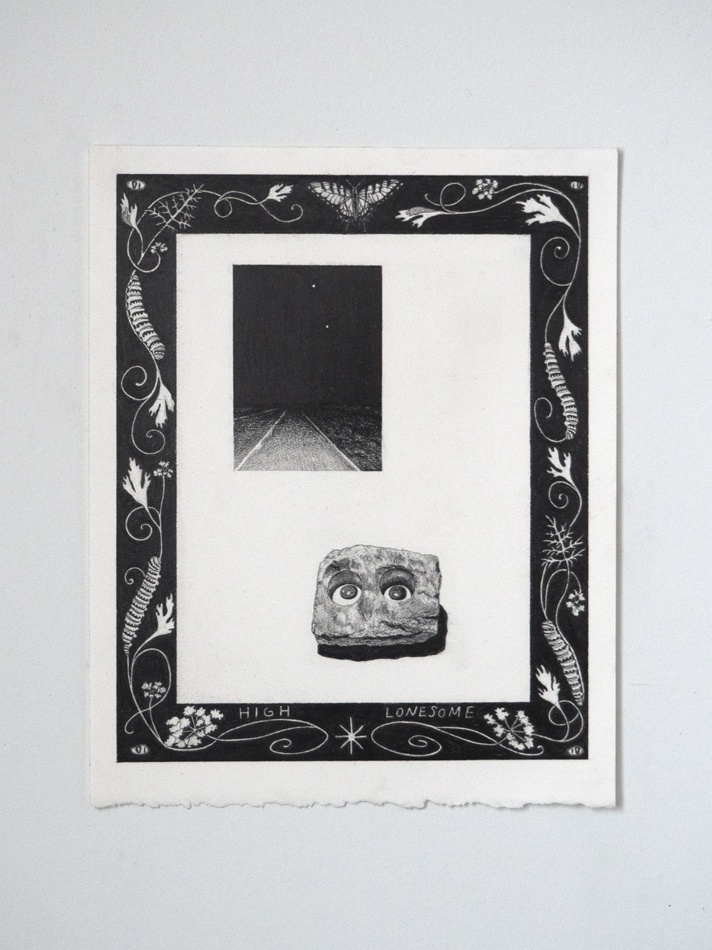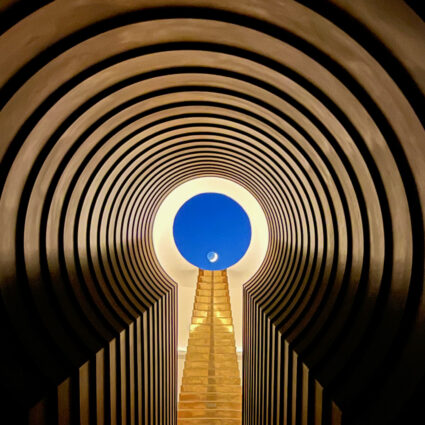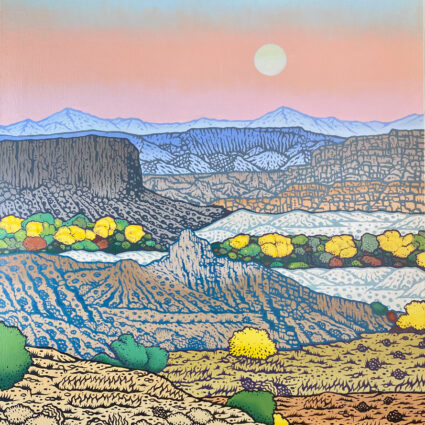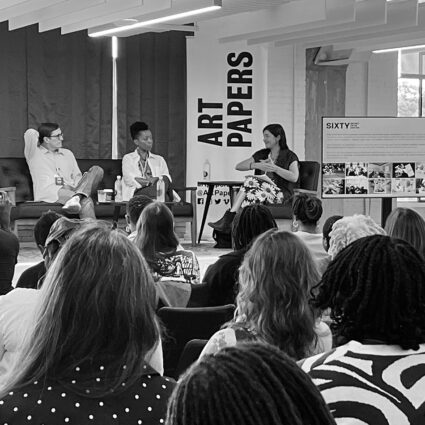Albuquerque-based artist Justine Kablack devoutly repeats images of the road, embracing its contradiction as both limitless and constrained.
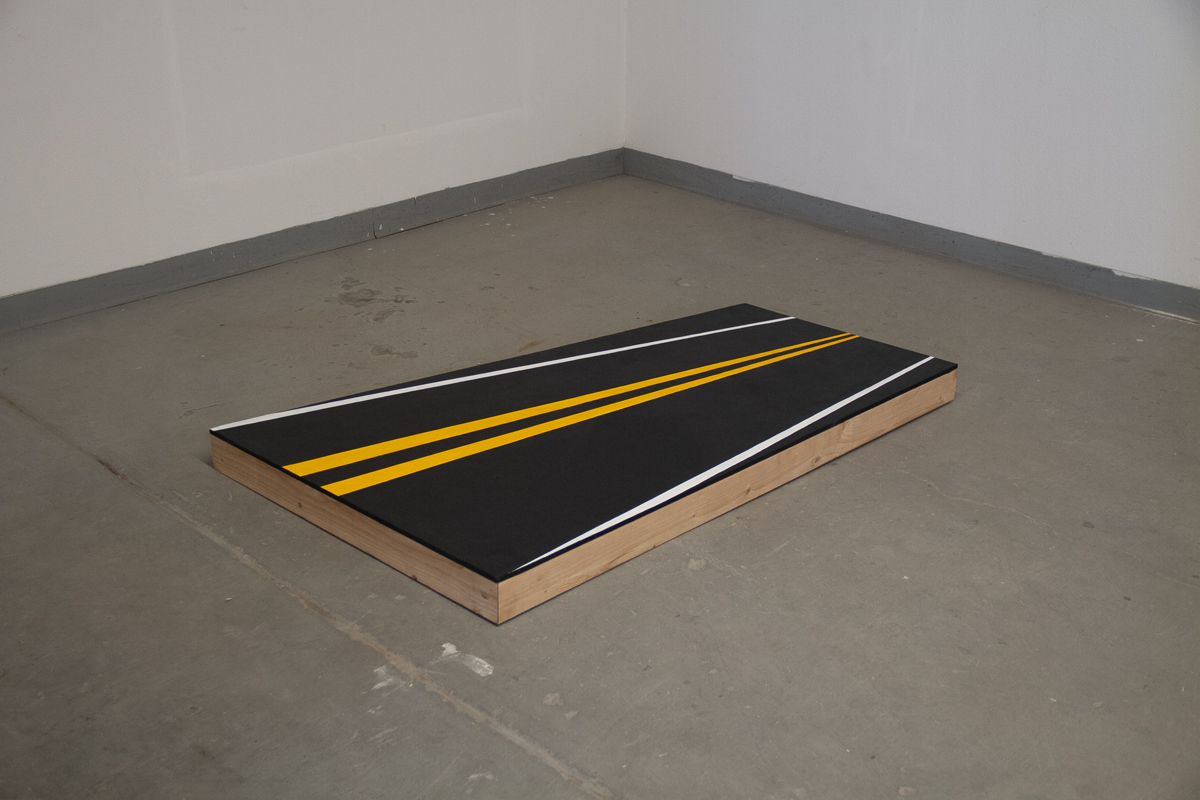
Albuquerque, New Mexico / justinekablack.com / @kab_ine
In Road from memory, 31 times (2023) there are three basic planes repeated: the night, the road, and the hood of a car. Albuquerque-based artist Justine Kablack devoutly repeats the image in sumi ink thirty-one times in a five-by-six grid, with the last remaining image hung solo, centered and taped to the right.
“Since 2018 I’ve driven across the country in my Toyota Tacoma nine times,” Kablack writes in her statement before laying out the contradictions that make the idea of “the road” so enduring: it represents liberation while its contours are carefully circumscribed; it offers the unknown while summarily remaining part of regular life; it is dully familiar and is the best path to the unfamiliar; it is full of “assumed ends,” as Kablack writes, but just as often, limitless currents.
“It’s everywhere, it’s always there,” Kablack concludes, and returns to the subject as a fixed point, drawing highways in graphite that taper toward distant horizon lines again and again in pieces like 8595 (talking to angels) (2024) and 3438 (Nature study/ What’s a road doing in a place so lost?) (2023). In sculptural pieces like dead end (2024), the drama of the road—that is, the distinction between how things look and what they are—is played up. The plywood platform is forty-eight inches long, with a very definitive edge. But just the same, the painted lines on the pavement converge toward an out-of-frame vanishing point. It suggests boundlessness even as it embraces a full stop.
In this series, Kablack daringly attempts to be in two places at once: the physical road with all its practical contours and the daydream of where it might lead. This dichotomy is the stuff of the road, the things that are sensible only at a great distance: chance, adventure, possibility
.
